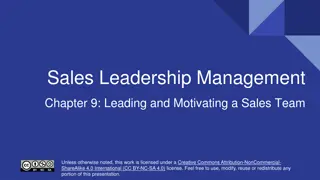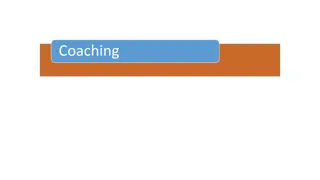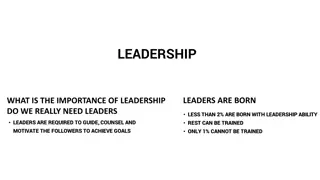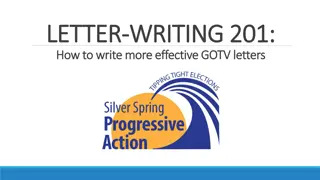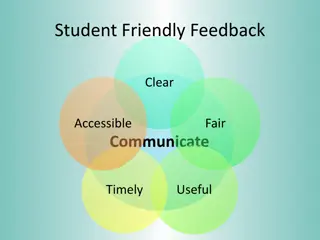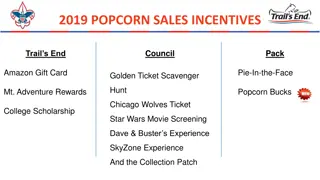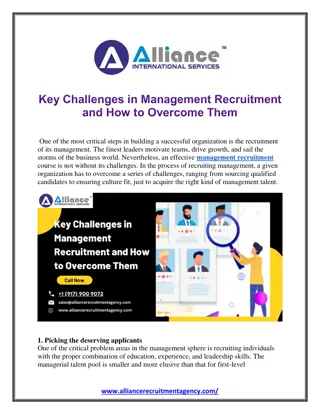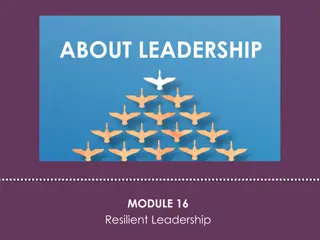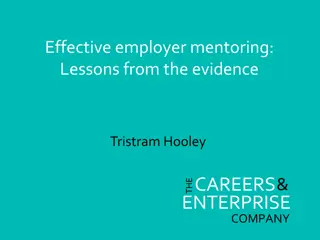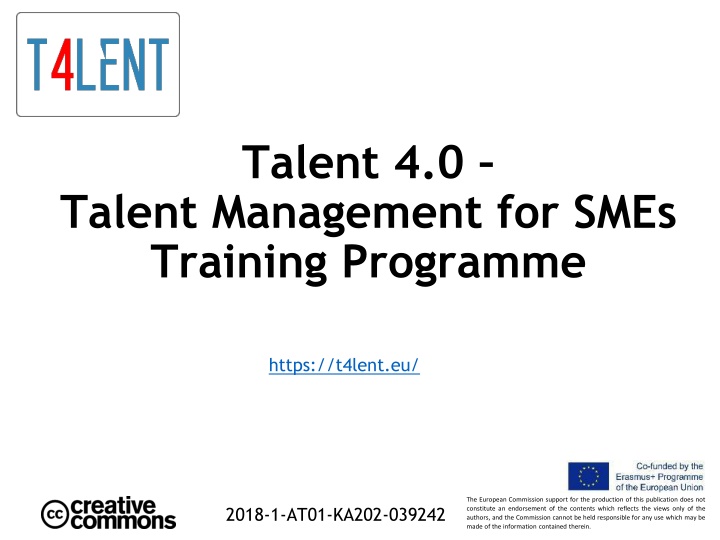
Unlocking Employee Potential: Insights on Motivation and Performance
Discover the key factors influencing employee motivation and performance, including Abraham Maslow's hierarchy of needs. Explore how to inspire and engage your team for enhanced productivity and satisfaction.
Download Presentation

Please find below an Image/Link to download the presentation.
The content on the website is provided AS IS for your information and personal use only. It may not be sold, licensed, or shared on other websites without obtaining consent from the author. If you encounter any issues during the download, it is possible that the publisher has removed the file from their server.
You are allowed to download the files provided on this website for personal or commercial use, subject to the condition that they are used lawfully. All files are the property of their respective owners.
The content on the website is provided AS IS for your information and personal use only. It may not be sold, licensed, or shared on other websites without obtaining consent from the author.
E N D
Presentation Transcript
Talent 4.0 Talent Management for SMEs Training Programme https://t4lent.eu/ The European Commission support for the production of this publication does not constitute an endorsement of the contents which reflects the views only of the authors, and the Commission cannot be held responsible for any use which may be made of the information contained therein. 2018-1-AT01-KA202-039242
M4: How to motivate your Employees Unit 1: Employee Motivation in theory Introduction Video Prepared by IHK-Projektgesellschaft www.ihk-projekt.de Germany The European Commission support for the production of this publication does not constitute an endorsement of the contents which reflects the views only of the authors, and the Commission cannot be held responsible for any use which may be made of the information contained therein. 2018-1-AT01-KA202-039242
Learning Outcomes This module wishes to guide and help learners: 1. Understand the role of motivation in determining employee performance. 2. Abraham Maslow's hierarchy of needs 3. What motivates employees? 4. Classify the basic needs of employees The European Commission support for the production of this publication does not constitute an endorsement of the contents which reflects the views only of the authors, and the Commission cannot be held responsible for any use which may be made of the information contained therein. 2018-1-AT01-KA202-039242
Learning Outcomes This module wishes to guide and help learners: 1. Understand the role of motivation in determining employee performance. 2. Abraham Maslow's hierarchy of needs 3. What motivates employees? 4. Classify the basic needs of employees The European Commission support for the production of this publication does not constitute an endorsement of the contents which reflects the views only of the authors, and the Commission cannot be held responsible for any use which may be made of the information contained therein. 2018-1-AT01-KA202-039242
Learning Outcomes This module wishes to guide and help learners: 1. Understand the role of motivation in determining employee performance. 2. Abraham Maslow's hierarchy of needs 3. What motivates employees? 4. Classify the basic needs of employees The European Commission support for the production of this publication does not constitute an endorsement of the contents which reflects the views only of the authors, and the Commission cannot be held responsible for any use which may be made of the information contained therein. 2018-1-AT01-KA202-039242
Introduction When you're motivated, you feel energized. You're ready to take things on, get things done, push things forward. Projects get moved along; emails get answered; you move along with pep in your step. When you're unmotivated, it's hard to get started. You drag your feet, push things off, and slow things down. You don't really want to do the project, write the email, or go to the meeting ... so you don't. For a long time. Maybe you don't even go at all. The fact is, knowing how to motivate your team is one of the most important parts of leadership. https://www.inc.com/melanie-curtin/what-motivates-you-at-work-when-200000-workers-were-asked-this-was-their-top-reponse.html The European Commission support for the production of this publication does not constitute an endorsement of the contents which reflects the views only of the authors, and the Commission cannot be held responsible for any use which may be made of the information contained therein. 2018-1-AT01-KA202-039242
Motivation is the word derived from the word motive which means needs, desires, wants or drives within the individuals. It is the process of stimulating people to actions to accomplish the goals. In the work goal context the psychological factors stimulating the people s behaviour can be desire for money success recognition job-satisfaction team work, etc One of the most important functions of management is to create willingness amongst the employees to perform in the best of their abilities. Therefore the role of a leader is to arouse interest in performance of employees in their jobs. Source: https://www.managementstudyguide.com/what_is_motivation.htm The European Commission support for the production of this publication does not constitute an endorsement of the contents which reflects the views only of the authors, and the Commission cannot be held responsible for any use which may be made of the information contained therein. 2018-1-AT01-KA202-039242
Defining Employee Motivation Motivation is one of the forces that lead to performance. Motivation is defined as the desire to achieve a goal or a certain performance level, leading to goal- directed behavior. When we refer to someone as being motivated, we mean that the person is trying hard to accomplish a certain task. Motivation is clearly important if someone is to perform well; however, it is not sufficient. Being motivated is not the same as being a high performer and is not the sole reason why people perform well, but it is nevertheless a key influence over our performance level. Motivation, ability, and environment are the major influences over employee performance. + = Environment + Performance Ability Motivation Performance is a function of the interaction between an individual s motivation, ability, and environment. The European Commission support for the production of this publication does not constitute an endorsement of the contents which reflects the views only of the authors, and the Commission cannot be held responsible for any use which may be made of the information contained therein. 2018-1-AT01-KA202-039242
Defining Employee Motivation Ability or having the skills and knowledge required to perform the job is also important and is sometimes the key determinant of effectiveness. Finally, environmental factors such as having the resources, information, and support one needs to perform well are critical to determine performance. At different times, one of these three factors may be the key to high performance. + = + Performance Environment Motivation Ability Performance is a function of the interaction between an individual s motivation, ability, and environment. The European Commission support for the production of this publication does not constitute an endorsement of the contents which reflects the views only of the authors, and the Commission cannot be held responsible for any use which may be made of the information contained therein. 2018-1-AT01-KA202-039242
Maslows Hierarchy of Needs Abraham Maslow is among the most prominent psychologists of the twentieth century. His hierarchy of needs is an image familiar to most business students and managers. The theory is based on a simple premise: Human beings have needs that are hierarchically ranked. The most basic of Maslow s needs are physiological needs. refer to the need for food, water, and other biological needs. These needs are basic because when they are lacking, the search for them may overpower all other urges. Physiological needs The European Commission support for the production of this publication does not constitute an endorsement of the contents which reflects the views only of the authors, and the Commission cannot be held responsible for any use which may be made of the information contained therein. 2018-1-AT01-KA202-039242
Maslows Hierarchy of Needs Maslow s hierarchy is a systematic way of thinking about the different needs employees may have at any given point and explains different reactions they may have to similar treatment. An employee who is trying to satisfy esteem needs may feel gratified when her supervisor praises an accomplishment. By making the effort to satisfy the different needs of each employee, organizations may ensure a highly motivated workforce. The European Commission support for the production of this publication does not constitute an endorsement of the contents which reflects the views only of the authors, and the Commission cannot be held responsible for any use which may be made of the information contained therein. 2018-1-AT01-KA202-039242
What motivates employees? What are the tools companies can use to ensure a motivated workforce? Many of us assume the most important motivator at work is pay. Yet, studies point to a different factor as the major influence over worker motivation job design. How a job is designed has a major impact on employee motivation, job satisfaction, commitment to an organization, absenteeism and turnover. The question of how to properly design jobs so that employees are more productive and more satisfied has received attention from managers and researchers since the beginning of the 20th Century. The European Commission support for the production of this publication does not constitute an endorsement of the contents which reflects the views only of the authors, and the Commission cannot be held responsible for any use which may be made of the information contained therein. 2018-1-AT01-KA202-039242
Source : TALENT4.0 ONLINE LTTA 25.06.2020 The European Commission support for the production of this publication does not constitute an endorsement of the contents which reflects the views only of the authors, and the Commission cannot be held responsible for any use which may be made of the information contained therein. 2018-1-AT01-KA202-039242
Traditionalists Traditionalist are motivated by money, but also want to be respected. Baby Boomers Baby boomers prefer monetary rewards, but also value flexible retirement planning and peer recognition. Five generations work side by side in today s workforce, making it important to create an inclusive culture that meets the varying needs of each age group. Generation X Generation X values bonuses and stock as monetary rewards and workplace flexibility as a non-monetary reward. Members of each generation bring a distinct set of values, attitudes and behaviors to the workplace. The multigenerational workforce requires flexible leadership, policies and programs. Generation Y Generation Y wants stock options as a monetary reward and values feedback as a non-monetary reward. Stereotypes? Generation Z Generation Z is more interested in social rewards (mentorship and constant feedback) than money, but also is motivated by meaningful work and being given responsibility. Source: https://www.shrm.org/ResourcesAndTools/hr-topics/behavioral-competencies/global- and-cultural-effectiveness/Pages/Motivating-Generations-Infographic.aspx The European Commission support for the production of this publication does not constitute an endorsement of the contents which reflects the views only of the authors, and the Commission cannot be held responsible for any use which may be made of the information contained therein. 2018-1-AT01-KA202-039242
What motivates employees? What are the tools companies can use to ensure a motivated workforce? Core Job Characteristics Psychological States Outcomes - Skill variety - Task identity - Task significance - Autonomy - Feedback - Motivation - Performance - Satisfaction - Absenteesim - Turnover - Meaningfulness - Responsibility - Knowledge of results The Job Characteristics Model has five core job dimensions. In 1980, Richard Hackman and Greg Oldham presented the definitive form of the Job Characteristics Model in their book Work Redesign . Source: https://www.toolshero.com/human-resources-hr/job-characteristics-model/ The European Commission support for the production of this publication does not constitute an endorsement of the contents which reflects the views only of the authors, and the Commission cannot be held responsible for any use which may be made of the information contained therein. 2018-1-AT01-KA202-039242
Classify the basic needs of employees Need-based theories describe motivated behavior as individuals efforts to meet their needs. The manager s job is to identify what people need and make the work environment a means of satisfying these needs. Maslow s hierarchy describes five categories of basic human needs, including physiological, safety, social, esteem, and self-actualization needs. ERG (Existence Needs, Relatedness Needs, and Growth Needs.) theory is a modification of Maslow s hierarchy. The theory recognizes that when employees are frustrated while attempting to satisfy higher level needs, they may regress. Each of these theories explains characteristics of a work environment that motivates employees. Source: https://businessjargons.com/alderfers-erg-theory.html The European Commission support for the production of this publication does not constitute an endorsement of the contents which reflects the views only of the authors, and the Commission cannot be held responsible for any use which may be made of the information contained therein. 2018-1-AT01-KA202-039242
Classify the basic needs of employees Ways in Which Managers Can Influence Expectancy, Instrumentality, and Valence Expectancy Instrumentality Valence - Make sure employees have proper skills, abilities and knowledge - Ensure that the environment facilitates performance - Provide encouragement to make people believe that their effort makes a difference - Find rewards that are desirable to employess - Make sure that the rewards are viewed as fair - Give employees choice over rewards - Reward employee performance - Inform people on advance about the rewards - Try to eliminate non-performance influence over rewards Source: https://www.businessballs.com/improving-workplace-performance/vrooms-expectancy-theory/ The European Commission support for the production of this publication does not constitute an endorsement of the contents which reflects the views only of the authors, and the Commission cannot be held responsible for any use which may be made of the information contained therein. 2018-1-AT01-KA202-039242
Source : https://www.thebalancecareers.com/how-great-managers-motivate-their-employees-1918772 The European Commission support for the production of this publication does not constitute an endorsement of the contents which reflects the views only of the authors, and the Commission cannot be held responsible for any use which may be made of the information contained therein. 2018-1-AT01-KA202-039242
What motivates employees to stay ? 46 % feeling 35 % 48 % recognition for achievements a good manager appreciated by employer 39 % 38 % 32 % opportunity for career growth promotion or new title opportunity to develop skills Source: Cornerstone 2013 U.S. Employee Report The European Commission support for the production of this publication does not constitute an endorsement of the contents which reflects the views only of the authors, and the Commission cannot be held responsible for any use which may be made of the information contained therein. 2018-1-AT01-KA202-039242
Exercises Many managers assume that if an employee is not performing well, the reason must be a lack of motivation. Do you think this reasoning is accurate? What is the problem with the assumption? How can an organization satisfy employee needs that are included in Maslow s hierarchy? The European Commission support for the production of this publication does not constitute an endorsement of the contents which reflects the views only of the authors, and the Commission cannot be held responsible for any use which may be made of the information contained therein. 2018-1-AT01-KA202-039242
Summary/Conclusion Employees respond to unfairness in their environment, they learn from the consequences of their actions and repeat the behaviors that lead to positive results, and they are motivated to exert effort if they see their actions will lead to outcomes that would get them desired rewards. None of the theories are complete on their own, but each theory provides us with a framework we can use to analyze, interpret, and manage employee behaviors in the workplace. Sources: https://saylordotorg.github.io/text_organizational-behavior-v1.1/s09-theories-of-motivation.html The European Commission support for the production of this publication does not constitute an endorsement of the contents which reflects the views only of the authors, and the Commission cannot be held responsible for any use which may be made of the information contained therein. 2018-1-AT01-KA202-039242
Thank you for watching! The European Commission support for the production of this publication does not constitute an endorsement of the contents which reflects the views only of the authors, and the Commission cannot be held responsible for any use which may be made of the information contained therein. 2018-1-AT01-KA202-039242
Pictures: 1. Bild von Alexas_Fotos auf Pixabay 2. Bild von Gerd Altmann auf Pixabay 3. Bild von Gerd Altmann auf Pixabay 4. Bild von Peggy und Marco Lachmann-Anke auf Pixabay The European Commission support for the production of this publication does not constitute an endorsement of the contents which reflects the views only of the authors, and the Commission cannot be held responsible for any use which may be made of the information contained therein. 2018-1-AT01-KA202-039242


